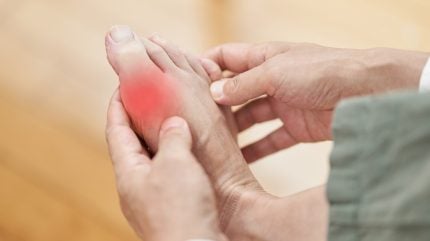
US-based biotechnology company Arthrosi Therapeutics has completed a series E funding round, amassing $153m which is earmarked to advance the clinical development of its flagship programme, pozdeutinurad (AR882), through Phase III trials for gout treatment.
The round was spearheaded by Prime Eight Capital and saw contributions from HighLight Capital, CR Biotech, HM Venture Partners, ReliantTech and current shareholders.

Discover B2B Marketing That Performs
Combine business intelligence and editorial excellence to reach engaged professionals across 36 leading media platforms.
The randomised, placebo-controlled, double-blind, twelve-month, replicate Phase III studies, dubbed REDUCE 1 and REDUCE 2, are aimed at assessing pozdeutinurad in treating both gout and tophaceous gout.
The primary goal of the trials is to determine the therapy’s potential in lowering serum urate (sUA) levels in patients.
Secondary goals include monitoring the decrease of gout flares and tophi over the course of treatment.
Enrolment for both trials has been completed, and Arthrosi anticipates releasing pivotal data in the second quarter of 2026.

US Tariffs are shifting - will you react or anticipate?
Don’t let policy changes catch you off guard. Stay proactive with real-time data and expert analysis.
By GlobalDataThe therapy has previously shown promise in terms of efficacy and safety in Phase II studies, against a standard of care, and achieved complete tophi resolution in a Phase IIb trial.
Arthrosi Therapeutics CEO and founder Litain Yeh stated: “We are delighted to have the continued support of an experienced and deeply committed group of investors.
“Arthrosi continues to make rapid progress on our mission to transform the treatment landscape for gout and tophaceous gout, an area with pressing unmet need. The commitment from both new and existing investors provides further validation for pozdeutinurad and the robust clinical data package we have generated to date.”
Gout is an inflammatory form of arthritis that severely impacts patients’ functionality, quality of life and mobility.
It is caused by the crystallisation of uric acid in the soft tissues and joints, leading to flare-ups and persistent symptoms.
The condition is predominantly due to the underexcretion of uric acid, which affects 90% of sufferers, resulting in high sUA levels and subsequent crystal deposition.



